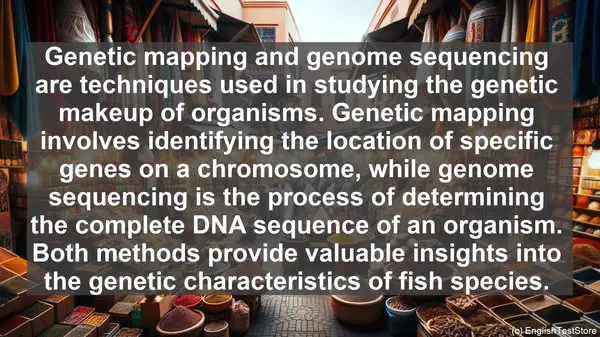Introduction
Welcome to today’s lesson on fish genetics. In this lesson, we’ll be focusing on the top 10 commonly confused words in this field. Understanding these words is crucial for a solid foundation in fish genetics. So let’s dive in!
1. Gene vs. Allele
The terms ‘gene’ and ‘allele’ are often used interchangeably, but they have distinct meanings. A gene is a segment of DNA that determines a specific trait, while an allele is a variant of a gene. In simpler terms, a gene is the recipe, and alleles are the different ingredients that can be used.
2. Genotype vs. Phenotype
Genotype and phenotype are two fundamental concepts. Genotype refers to the genetic makeup of an organism, while phenotype is the observable characteristics. Think of genotype as the instructions, and phenotype as the end result. For example, a fish’s genotype may have the potential for vibrant colors, but the phenotype will only show those colors if the right conditions are met.
3. Homozygous vs. Heterozygous
Homozygous and heterozygous describe the presence of the same or different alleles of a gene, respectively. If both alleles are the same, it’s homozygous. If they’re different, it’s heterozygous. Homozygous individuals often exhibit the trait associated with that gene more strongly, while heterozygous individuals may have a more varied expression.

4. Dominant vs. Recessive
Dominant and recessive are terms used to describe the relationship between alleles. A dominant allele masks the presence of a recessive allele. So, if an organism has even one copy of the dominant allele, the dominant trait will be expressed. Recessive traits are only seen when an organism has two copies of the recessive allele.
5. Homologous vs. Analogous
Homologous and analogous are used to compare structures. Homologous structures have a common evolutionary origin, even if their functions may differ. Analogous structures, on the other hand, have similar functions, but their evolutionary origins are different. In fish genetics, understanding the difference between these terms is crucial for studying the evolution of different traits.
6. Inbreeding vs. Outbreeding
Inbreeding and outbreeding refer to the mating patterns within a population. Inbreeding involves mating between closely related individuals, while outbreeding involves mating between unrelated individuals. Inbreeding can lead to a higher chance of inheriting harmful traits, while outbreeding promotes genetic diversity.
7. Hybridization vs. Crossbreeding
Hybridization and crossbreeding are methods of breeding. Hybridization involves mating individuals from different species or subspecies, resulting in hybrids. Crossbreeding, on the other hand, involves mating individuals from the same species but with different traits. Both methods can lead to offspring with unique characteristics.
8. Genetic Drift vs. Gene Flow
Genetic drift and gene flow are mechanisms that affect the genetic composition of a population. Genetic drift refers to the random changes in gene frequencies over time, often seen in smaller populations. Gene flow, on the other hand, is the transfer of genes between populations through migration. Both processes play a significant role in shaping the genetic diversity of fish populations.
9. Mutation vs. Polymorphism
Mutation and polymorphism are terms related to genetic variations. A mutation is a permanent change in the DNA sequence, while polymorphism refers to the presence of multiple forms of a gene within a population. Mutations can lead to the creation of new alleles, while polymorphisms reflect the existing genetic diversity.
10. Genetic Mapping vs. Genome Sequencing
Genetic mapping and genome sequencing are techniques used in studying the genetic makeup of organisms. Genetic mapping involves identifying the location of specific genes on a chromosome, while genome sequencing is the process of determining the complete DNA sequence of an organism. Both methods provide valuable insights into the genetic characteristics of fish species.

